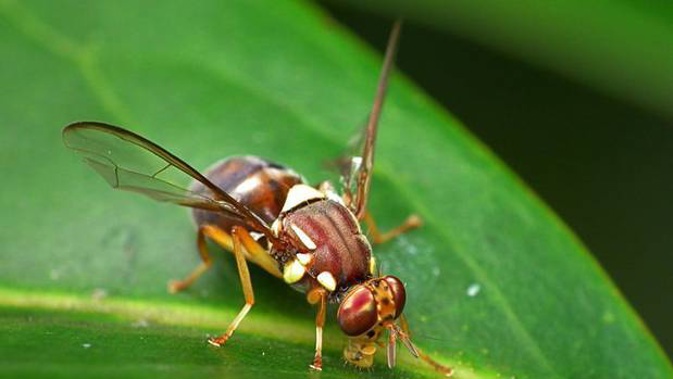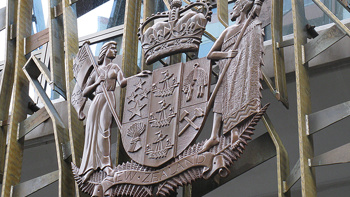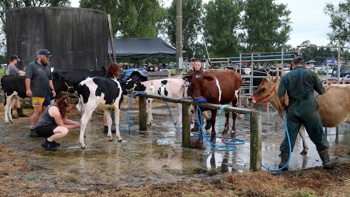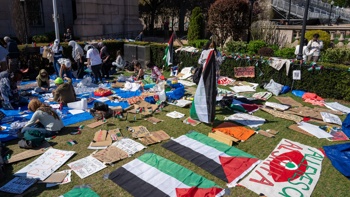
Auckland's Queensland fruit fly response has come in just under budget, at nearly $18 million.
With just 14 flies caught, that's just under $1.3m per fly.
It's the largest fruit fly response ever – as it's likely to be more expensive than the similar length 2015 Queensland fruit fly response in and around Grey Lynn area, which cost $15.7 million.
But, horticulture industry leaders say if the pest had of established itself here, the New Zealand economy would lose billions.
The first was found in Devonport on February 14 last year.
Another ten were found in Northcote on February 20, 23, 28; March 4, 10, 14; April 25, May 10 and 31.
The last was found on July 15 and there hasn't been another sighting since.
Elsewhere, three Facialis Fruit Flies, which originate from Tonga, were found in Ōtara in traps between February 18 and March 5, 2019.
These discoveries have been classed as a separate response, which cost just over $500,000.
Biosecurity New Zealand spokesperson Dr Catherine Duthie said within the next week they'll be doing the final trap checks.
There are just over 1300 fruit fly traps across Auckland to check, with 162 in the specific response Controlled Area in Northcote.
"If we don't find anything in that check, we'll be wrapping up the response soon afterwards," she said.
If the Queensland fruit fly established itself on our shores it would jeopardise a horticulture industry worth $5billion-$6b in domestic sales and exports.
Eighty per cent of New Zealand's horticulture crops are susceptible to attack by the pest, including the kiwifruit industry – which is worth about $2b a year alone.
Fruit Fly Council chair and Kiwifruit Vine Health chief executive Stu Hutchings said if the Queensland fruit fly were to take hold here the kiwifruit industry would lose around $430m annually.
Fruits and vegetables the fly attacks would be inedible and everything would become subject to trade conditions.
"Countries like China and some parts of Europe where they don't have it have export restrictions because of that," Hutchings said.
The Queensland Fruit Fly response in Auckland has been enormous – but the Ministry for Primary Industries has always been well-prepared.
There's been a dedicated trapping system in place since the 1970s and MPI currently has more than 7600 traps set country-wide.
Most traps are placed near airports, seaports, and densely populated areas – where flies would most likely enter the country.
A fruit fly warning sign in suburban Auckland after a male Queensland fruit fly was fought in a trap in Sandringham. New Zealand Herald photograph
"Fruit fly response is something that we, as a Ministry, are very good at," Duthie said.
"Our surveillance system is world class. We can detect these flies at a very low level - as little as one fly in the environment. And that's why we have these responses reasonably frequently."
The near one year operation has been jointly funded by the horticulture industry and Biosecurity New Zealand under the Government Industry Agreement (GIA).
It's something Hutchings said had been successful.
"We've worked together on the plan about how the response gets done, on resourcing it, the whole approach has been a collaborative one."
Federated Farmers Arable Industry chair, Karen Williams agreed.
"It's a really big encouragement for industries to work with Biosecurity NZ on the GIA. We want a formula that works, and the GIA is still in its infancy in some places. But, it's something we'll work on together," she said.
Biosecurity surveillance coordinator Kerry King working in Devonport in mid-February during the fruit fly scare. New Zealand Herald photograph / Michael Craig
Since April 26, an area of Northcote has been under a Controlled Area Notice – restricting the movement of fruits and vegetables.
Residents have been warned not to move any home-grown whole fresh fruit or vegetables (except for leafy or root veges) and any garden waste like cuttings from fruit trees or vegetable garden cuttings out of the controlled area.
Instead, the waste has been disposed of in Biosecurity New Zealand provided waste bins.
Duthie praised the public's cooperation.
"It wouldn't have been nearly as easy without the support they've given us," she said.
"Everybody's been really good with complying with the restrictions and they've been imposed on them on a long time now."
Timeline: Fruit flies found in Auckland, 2019
February 14 - Single male Queensland fruit fly located in Devonport, on the North Shore. A Controlled Area Notice is put in place (February 15).
February 18 - A different species of fruit fly, a male facialis, discovered in Ōtara, south Auckland. A Controlled Area Notice is put in place (February 19).
February 20 - Another single male Queensland fruit fly found on the North Shore, this time in Northcote. A Controlled Area Notice is put in place (February 21).
February 21 - A second single male facialis detected in Ōtara, only 70 metres from the first find.
February 23 - Another single Queensland fruit fly found in Northcote.
February 28 - A third single male Queensland fruit fly detected in Northcote, 270 metres from where the last was found.
March 4 - A fourth male Queensland fruit fly detected in Northcote, approximately 80 metres from where the last was found.
March 5 - A third single male facialis detected in Ōtara, 630 metres to the North of the last find.
March 10 - A fifth single male Queensland fruit fly is found in Northcote, 60 metres from where the last was found.
March 14 - A sixth single male Queensland fruit fly is found in Northcote 650 metres south of the original find. The operational response was stepped up to include baiting.
March 22 – The Controlled Area Notices for Devonport and Ōtara are lifted after no further fruit flies were detected. Enhanced trapping continues as a precautionary measure.
April 12 – The Controlled Area Notice for Northcote is lifted after no further fruit flies were detected. Enhanced trapping continues as a precautionary measure.
April 25 – A seventh single male Queensland fruit fly was found in Northcote 460 metres away from where the cluster of male flies were found over a three week period (February 20 – March 14). A Controlled Area Notice is put in place (April 26).
May 10 – An eighth single male Queensland fruit fly is found in Northcote 1.6 kilometres away from where the last fly was found. The operational response is stepped up to include baiting.
May 31 – A ninth single male Queensland fruit fly is found in the current controlled area in Northcote, 80 metres from where the last was found.
July 15 – A tenth single male Queensland fruit fly is found in the current controlled area in Northcote, 350 metres from where the last was found.
Take your Radio, Podcasts and Music with you









